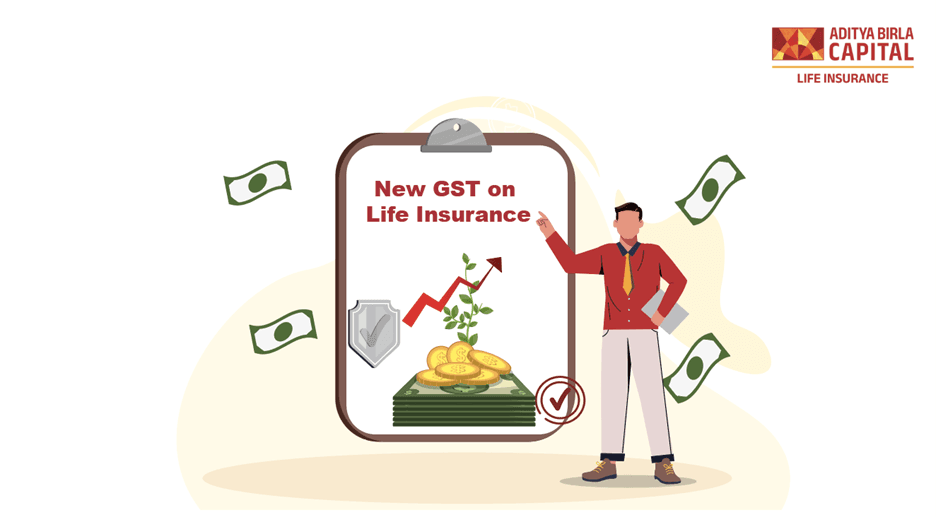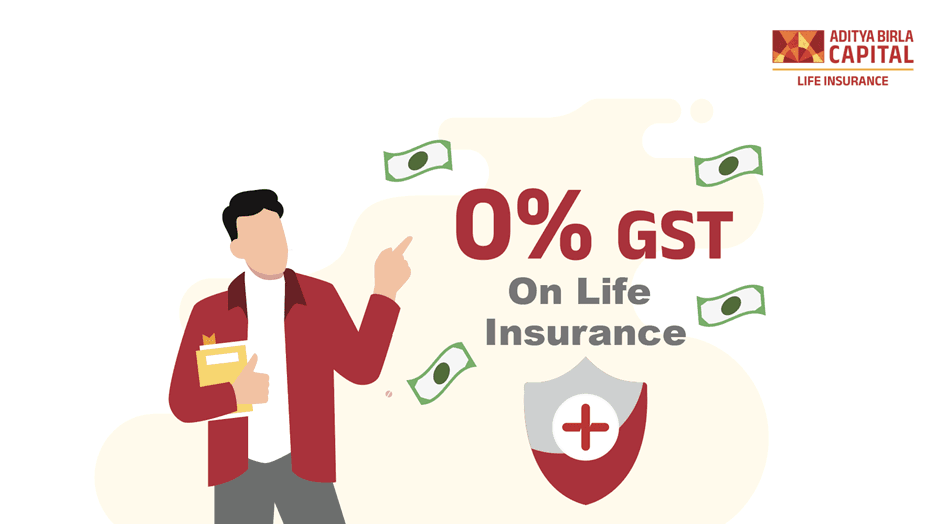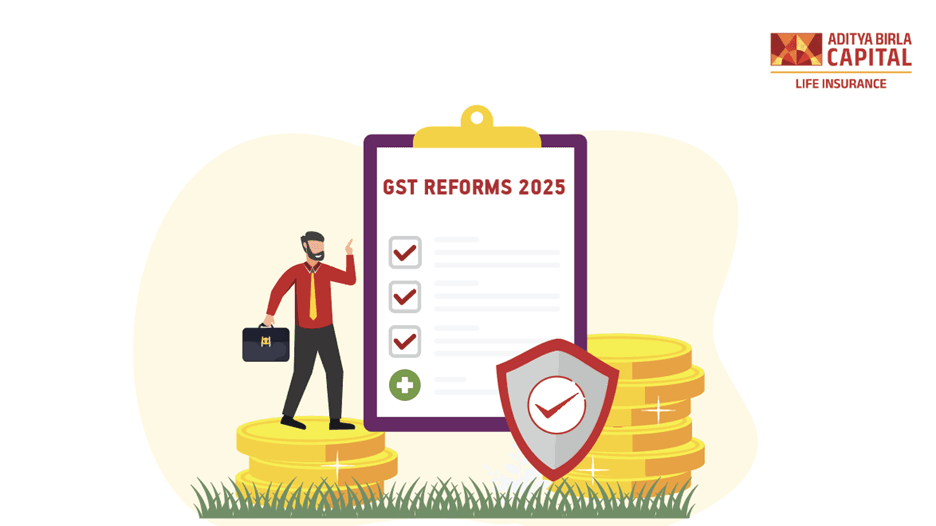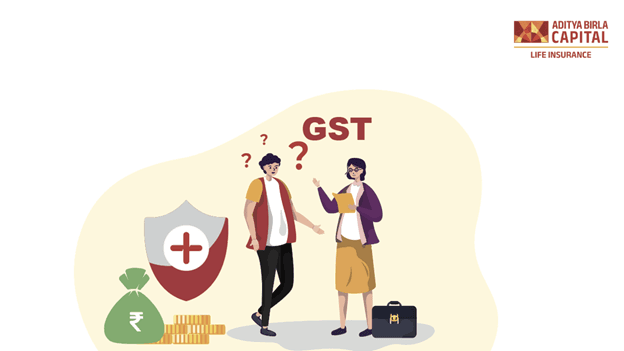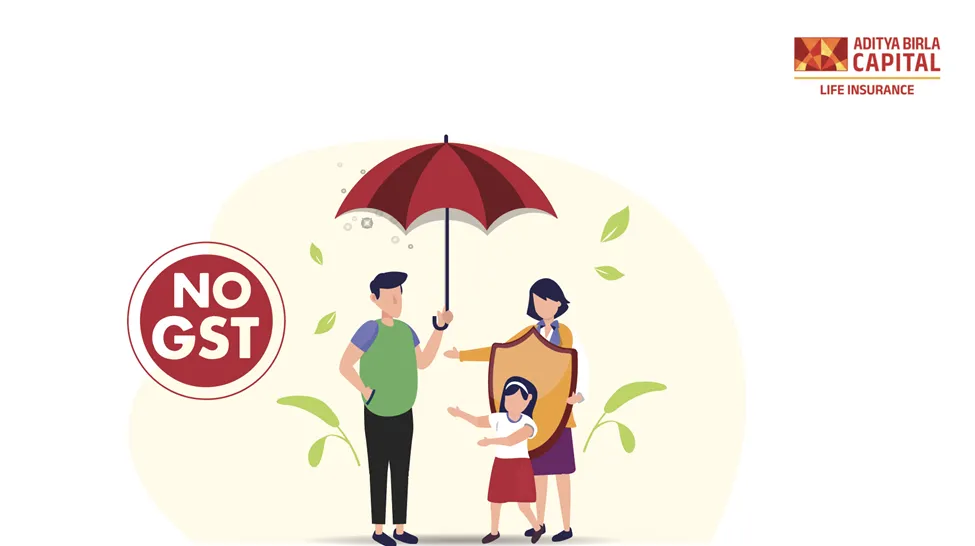If you’ve ever bought a life insurance policy, you know that every premium you pay isn’t just about protection, it’s also about discipline, security, and peace of mind. But until recently, a small portion of that premium didn’t actually go toward your coverage or savings. It went toward taxes.
For years, life insurance premiums carried an 18% Goods and Services Tax (GST). This meant that if you were paying ₹10,000 annually, ₹1,800 of it went straight to tax, not toward your family’s financial future.
That changed in September 2025, when the GST Council introduced new GST rules for life insurance.
From 22 September 2025, all life insurance products, including term plans, endowment policies, ULIPs, and whole-life covers, have been made GST-free.
The new GST on life insurance is now 0%, marking a major shift in India’s approach to financial protection and inclusivity.
What Changed Under the New GST on Life Insurance
Before diving into the benefits, let’s quickly understand the difference between the old and new systems.
| Aspect | Before 22 September 2025 | After 22 September 2025 |
|---|
| GST Rate on Life Insurance | 18% | 0% |
| Applicability | Life insurance, riders, ULIPs, etc. | All of the above - exempt |
| Policy Cost | Higher due to added tax | Reduced premiums |
| Transparency | Premium breakdown included tax | Single transparent price |
| Affordability | Moderate to high | Significantly more affordable |
The new reform means no tax component is added to your premium, what you pay now goes entirely toward your coverage or investment benefit.
Why the Government Introduced the Change
The decision to bring down GST from 18% to 0% wasn’t just about tax relief. It was about creating a system where financial protection becomes a basic necessity, not a luxury.
-
To Improve Insurance Penetration
India’s life insurance penetration rate, the ratio of premiums to GDP, has hovered around 4%. This is much lower than developed countries, where penetration ranges between 10–12%. High costs were one of the key deterrents. The 0% GST reform removes that barrier.
-
To Encourage Financial Inclusion
The government’s vision of ‘Insurance for All by 2047’ aims to bring every Indian household under at least one life or health insurance cover. Lower premiums make that goal far more achievable.
-
To Support the Middle Class
With inflation and rising living expenses, families have been cutting down on long-term financial products. Making life insurance tax-free brings essential protection back within reach.
-
To Simplify the System
Previously, different insurance categories had different tax treatments, causing confusion. The new 0% GST rule introduces uniformity and transparency across the board.
How the New GST on Life Insurance Impacts You
The shift to 0% GST affects policyholders in multiple positive ways, from lower premiums to better long-term returns.
-
Lower Premiums Across All Plans
Your premium now directly reflects your coverage, without an added tax. This instantly makes every life insurance policy more affordable.
Example:
If your old premium was ₹12,000 with GST (₹10,000 + ₹2,000 GST), you’ll now pay only ₹10,000.
That’s an annual saving of ₹2,000, and over a 20-year policy, that adds up to ₹40,000 saved, without changing your benefits.
-
Higher Coverage for the Same Budget
With lower premiums, you can now buy higher coverage amounts within the same budget. For example, a ₹15,000 premium that earlier gave ₹50 lakh coverage might now fetch ₹60 lakh or more, depending on your insurer.
-
Improved Returns for Savings-Based Plans
In plans that combine protection with savings, such as endowment or ULIP policies, removing GST ensures that a larger portion of your premium goes toward the investment component, potentially improving your final payout.
-
Cheaper Riders and Add-Ons
Add-ons like critical illness, accidental death, or waiver of premium riders are now fully GST-free too. This means you can enhance your policy coverage without paying extra taxes.
-
Easier Renewals
For existing policies, the new GST rules automatically apply at renewal. You’ll see a lower premium on your next payment cycle without needing to make any changes yourself.
Who Benefits the Most from the New GST on Life Insurance
While every policyholder benefits from this reform, certain segments stand to gain the most.
-
Middle-Class Families
For households managing EMIs, education fees, and daily expenses, every rupee counts. The removal of GST directly lowers out-of-pocket costs, making it easier to stay insured long-term.
-
Young Professionals
Young earners who often delay buying life insurance due to affordability concerns now have a powerful reason to start early. Lower premiums make protection accessible even on entry-level salaries.
-
Senior Citizens
Older individuals renewing existing policies, or investing in savings-based life plans for estate or retirement planning, enjoy immediate financial relief from lower costs.
-
Self-Employed and Small Business Owners
Without corporate life insurance benefits, self-employed professionals can now access private coverage at a lower price.
How the Change Affects the Insurance Industry
The new GST regime isn’t just beneficial for consumers, it also strengthens the insurance sector as a whole.
-
Higher Policy Adoption
With affordability improving, insurers are witnessing increased first-time purchases and renewed interest from younger demographics.
-
Lower Lapse Rates
Affordable renewals mean fewer policy discontinuations, improving industry retention and customer satisfaction.
-
Simplified Pricing Models
A flat 0% GST removes the need for multiple tax slabs or complex premium breakdowns, allowing insurers to focus on product innovation.
-
Better Financial Planning Integration
With lower barriers to entry, more financial advisors can now include life insurance as a core component of holistic financial planning for clients.
Economic Impact of the 0% GST Reform
The GST exemption has broader implications beyond individual households.
- Increased Savings Rate: Families save money on premiums, which can be redirected toward investments, improving India’s domestic savings ratio.
- Financial Stability: With more people insured, fewer families face debt during emergencies, reducing economic strain.
- Boost to Long-Term Capital Formation: Life insurance companies are major investors in infrastructure and bonds. Increased participation strengthens these investment channels.
- Job Creation: As the insurance industry grows, employment opportunities rise in advisory, underwriting, and digital services.
The ripple effect of this single policy change will be felt across India’s economy for years to come.
Comparing the Old and New GST Framework
| Feature | Old GST Regime (Pre-Sept 2025) | New GST Regime (Post-Sept 2025) |
|---|
| GST Rate | 18% | 0% |
| Coverage | Applied to all life insurance and riders | Fully exempt |
| Premium Affordability | Higher | Lower |
| Tax Complexity | Multiple slabs and calculations | Uniform and simple |
| Consumer Perception | Insurance as a taxed product | Insurance as an essential protection |
| Renewal Costs | Rising over time | More affordable long-term |
This shift isn’t just administrative, it’s psychological. It redefines insurance as a need, not a nice-to-have.
Real-Life Example: How Much You Save
Let’s illustrate this with a simple example:
Before 22 September 2025:
Anita, 35, pays ₹20,000 per year for her life insurance policy. With 18% GST, her total annual premium is ₹23,600.
After 22 September 2025:
The GST is removed, and Anita now pays only ₹20,000.
She saves ₹3,600 every year. Over 25 years, that’s ₹90,000 in savings, enough to fund a family trip or start an investment SIP.
And if she had multiple policies (life + health + riders), her total savings would be even higher.
How This Change Supports ‘Insurance for All by 2047’
The new GST framework directly supports India’s national agenda of universal financial protection. Here’s how:
- Affordability Drives Inclusion: Lower costs make insurance accessible to rural and low-income households.
- Digital Expansion: Simplified pricing encourages more online purchases, helping insurers reach wider audiences.
- Trust in the System: Transparent pricing eliminates confusion, improving confidence among first-time buyers.
- Long-Term Financial Culture: Affordable premiums encourage disciplined saving habits and risk management.
Together, these outcomes bring India closer to the goal of “Insurance for All by 2047.”
How Insurers Are Adapting to the New GST Rules
Insurance providers have acted swiftly to implement the new structure. Most insurers, including leading life companies, have:
- Revised premium calculations to exclude GST components.
- Updated online and offline systems for transparent billing.
- Notified existing customers about the revised rates.
- Launched awareness campaigns to educate policyholders on the new benefits.
This ensures that every customer enjoys a seamless transition into the GST-free insurance era.
Emotional Impact: Security Without Sacrifice
Financial protection has always carried an emotional weight, it’s a commitment to one’s family and future. The new GST reform lightens that emotional burden too.
- You no longer have to choose between affordability and security.
- You can protect your loved ones without compromising other goals.
- You can plan for the future without feeling overtaxed today.
For millions of households, that translates to something priceless, peace of mind.
What Policyholders Should Do Now
If you already have a life insurance policy or are planning to buy one soon, here’s how to make the most of the new GST rules.
- Check Renewal Dates: Ensure your next premium payment reflects the revised 0% GST rate.
- Review Your Coverage: Use the savings to enhance your sum assured or add essential riders.
- Start Early: The earlier you buy life insurance, the lower your base premium, and now, with no GST, it’s even more affordable.
- Encourage Family Coverage: Educate your family members about the new benefits and help them secure their own protection plans.
- Combine Savings and Protection: Explore policies that offer both life cover and wealth-building opportunities, now with no tax burden on the premium.
A Step Toward a More Inclusive Financial Future
The new GST on life insurance is not just a fiscal reform; it’s a social one.
It signals that the government sees protection as a shared national priority.
It’s a reminder that the foundation of a strong economy isn’t just business growth, it’s the security of its people.
With zero GST, life insurance has finally become what it was always meant to be, a tool for empowerment, not an added expense.
Final Thoughts
The 2025 GST reform represents a new era for insurance in India.
By bringing the tax rate down from 18% to 0%, the government has made life insurance more affordable, accessible, and fair for everyone.
For individuals, it means lower premiums and higher coverage.
For insurers, it means greater inclusion and trust.
And for the nation, it means a step closer to financial resilience and equality.
If you’ve ever delayed buying life insurance because it felt costly, now is your time.
Because with the new GST on life insurance, every rupee you pay goes exactly where it should, toward protecting your loved ones and securing your dreams.

